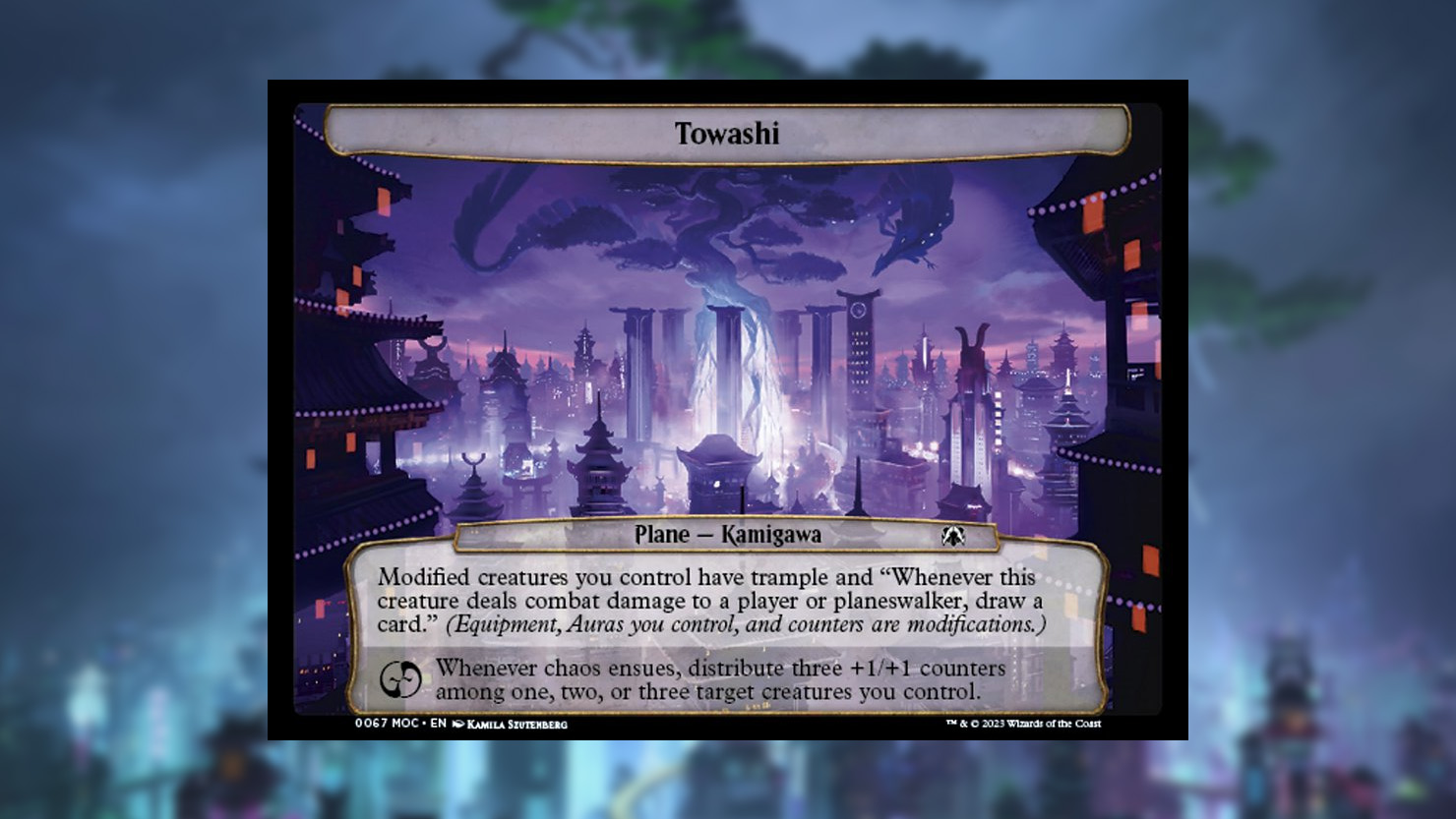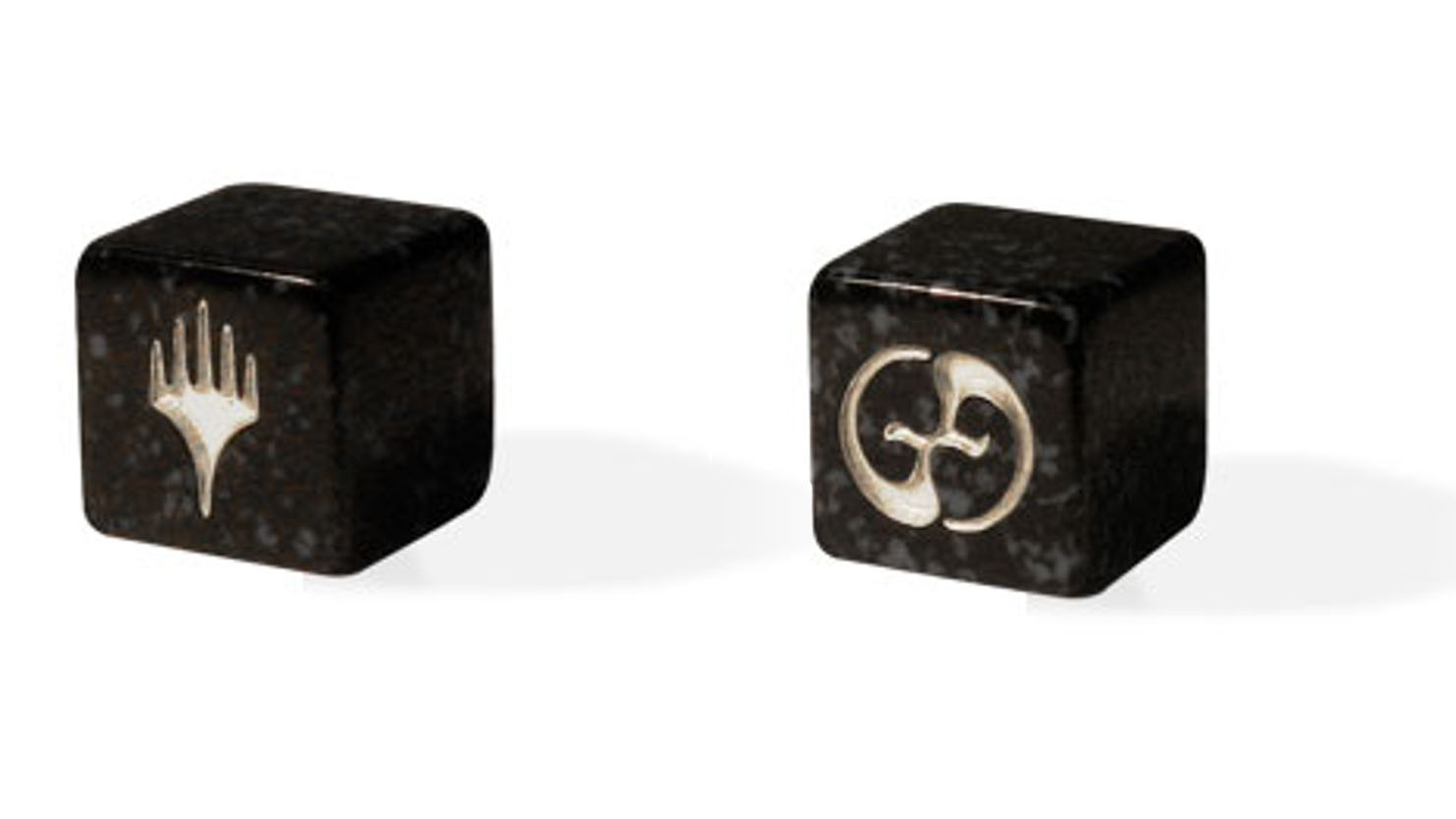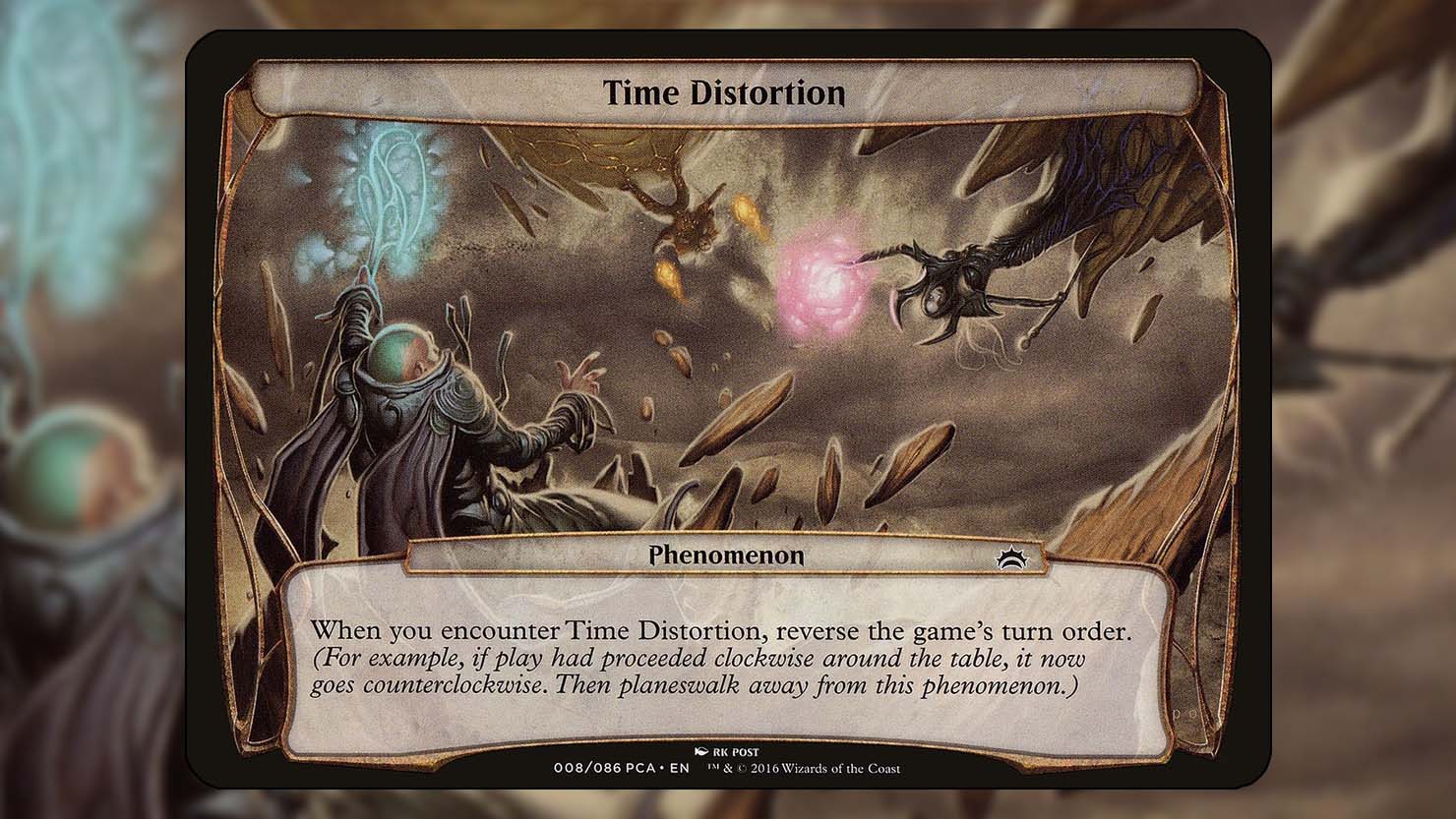Loading...
Products
Magic: The Gathering Line
Plane cards are special oversized cards that were first introduced in 2009 with the release of Planechase, a collection that contained 4 packs, each with a 60-card deck, 10 plane cards, and a special planar die. A collection designed for unconventional multiplayer games.
Planechase cards are a representation of locations in the Magic multiverse. Therefore the cards have the Plane type and the name of the plane to which the location belongs as their subtype. For example, the new Towashi, which was printed in March of the Machine, has the subtype Kamigawa.

In total there are 103 different plane cards, adding the 8 phenomenon cards (which we will explain in detail later), there are currently 111 possible cards for a planar deck.
Planes usually have two important parts: A main ability which can be a continuous effect, such as Tazeem in Zendikar (whose ability is that creatures can't block while this plane is active), or a triggered ability, such as Undercity Reaches from Ravnica (which allows the controller to draw a card each time one of their creatures deals combat damage to a player).
There are also planes that have abilities that trigger when we enter or leave that plane, such as Sanctum of Serra. If we planeswalk away from it, it will destroy all nonland permanents.
In addition, planes have a second part, which we can see shaded at the bottom of the card next to the chaos symbol. These abilities are related to the planar die and will trigger if a player rolls the chaos symbol. For example, on Mirrodin's Panopticon, rolling chaos will let you draw a card.
Let's talk about the planar die, this curious 6-sided die, in which 4 of the faces are blank and have no effect. There are two opposite faces on the die that do have an effect though: The Planeswalker symbol forces us to leave a plane and go to the next one, the chaos symbol triggers the special ability of the plane we are on.

So let's delve a little deeper into how a game of Planechase works and what rules we have to apply if we play it!
To start, the plane cards must form a separate planar deck. You can either use individual planar decks or a shared planar deck. An individual planar deck must be composed of at least 10 plane cards or phenomenon cards, but the number of phenomenon cards is limited to a maximum of 2. A shared planar deck must contain at least 40 cards (or 10 cards for each player, whichever number is smaller) and not more than 2 phenomenon cards per player. Planar decks also must be singleton, meaning we can't have more than one of each unique card.
Phenomenon cards are also special oversized cards, valid only in this type of game. Unlike Planes, they are special effects that can take actions or change game rules. For example, Time Distortion will change the turn order of the game.

Once the starting hands have been kept and the Planechase game is about to begin, the starting player reveals the top card of their (or the shared) planar deck and its abilities are in effect. Only one plane can ever be face up on the entire table. The starting player becomes the controller of the active plane and at the beginning of each player's turn, that player becomes the new controller of the active plane, even if it doesn't belong to their planar deck, thus making planes affect all players equally.
During the active player's turn, at any time they could cast a sorcery, that player may roll the planar die. If the result is the chaos symbol, they activate the chaos effect of the active plane card. This action is called "chaos ensues". The player must put the triggered chaos effect on the stack and receives priority.
Another possible result of the roll is the Planeswalker symbol, in which case the player who rolled the die puts the active plane on the bottom of its owner's or the shared planar deck and reveals the first card of their own planar deck or the next plane card from the shared deck. This is called "planeswalk" and simulates the ability of Planeswalkers to travel between planes.
In case the result is the blank face (which will be the most frequent one as the planar die has 4 of them), the die will have no effect and the turn continues.
However, we can roll the planar die as many times as we want on our turn - but with a small catch: the first roll is free, the second will cost 1 generic mana, the third one 2 generic mana, and so on. Fun fact: With the release of Planechase in 2009, the card Fractured Powerstone was also released, which allows us to tap it to roll the planar die without paying additional costs. This card was the first black-bordered card in Magic: The Gathering that referenced rolling a die!
The only question left: What happens when a player loses in a game of Planechase?
There are two cases: If the eliminated player was the planar controller, meaning it was their turn, the next player in turn order simply becomes the planar controller before the previous player is eliminated. In the case that the eliminated player was the owner of the active plane card, the next player in turn order must reveal the first card of their own or the shared planar deck and becomes the planar controller.
By the way: Planar games don't have to be Commander games! You can play these cards as a supplement to any format, even in two-player games.